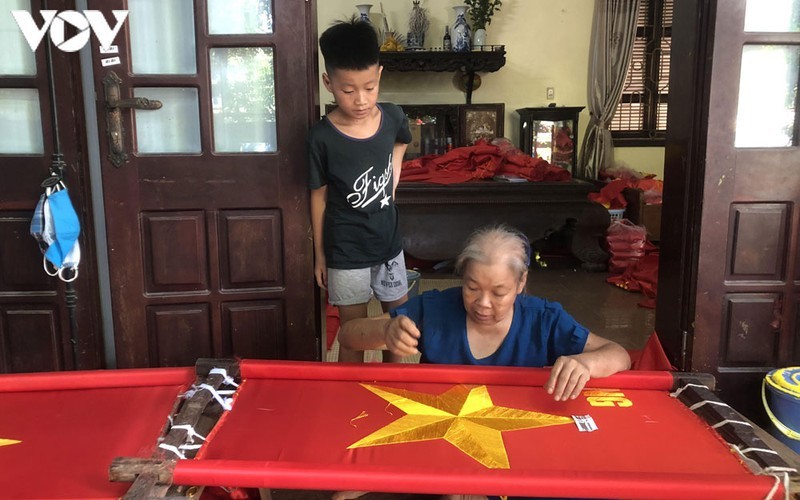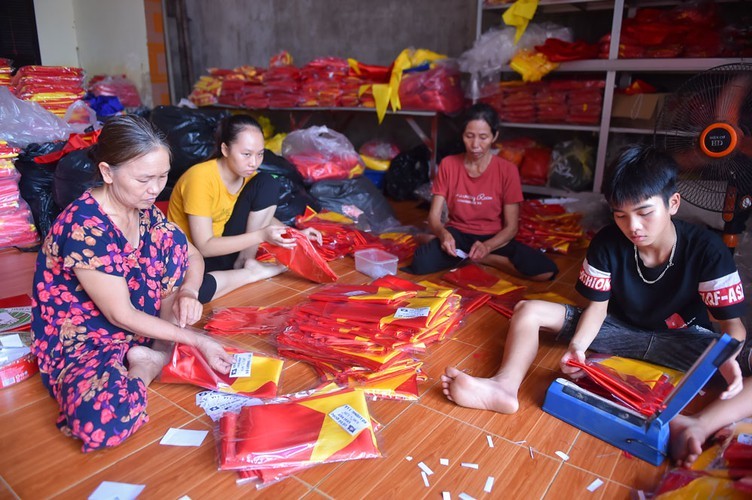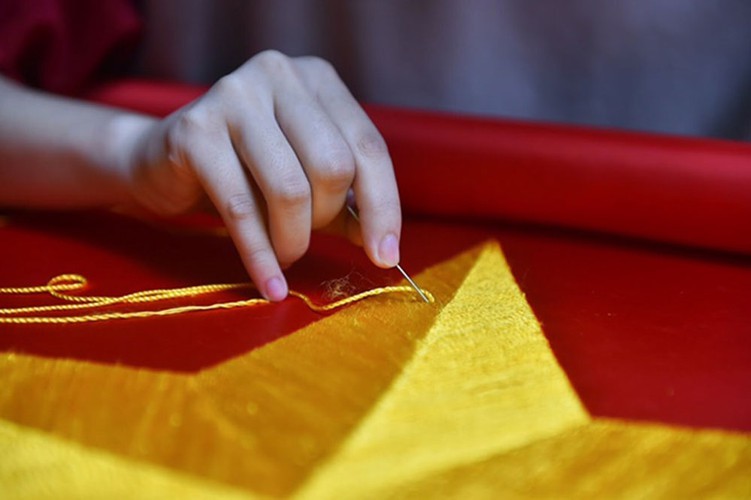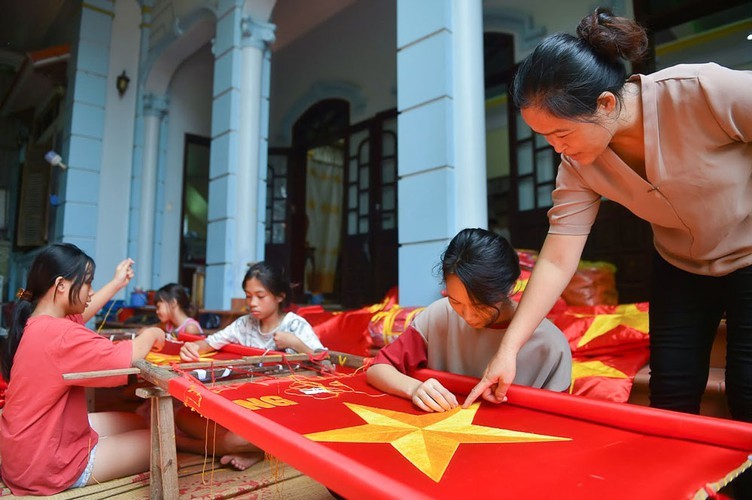Located 30 km south of Hanoi, Tu Van village in the capital’s Thuong Tin district is famed for its embroidery and weaving.
It has made millions of national flags for over 70 years.
Local people say they made the national flags used on September 2, 1945.
Seventy-five years later they still devote themselves to making the most beautiful flags.
It takes 10 steps to make a flag, with the most important being selecting nice fabric.
Most flags nowadays are made with embroidery machines. But those made by hand have their own beauty.
All of the tailors love their job, considering it an honour.
From Tu Van village, the national flags go on to fly in every corner of the country, affirming its independence and sovereignty.
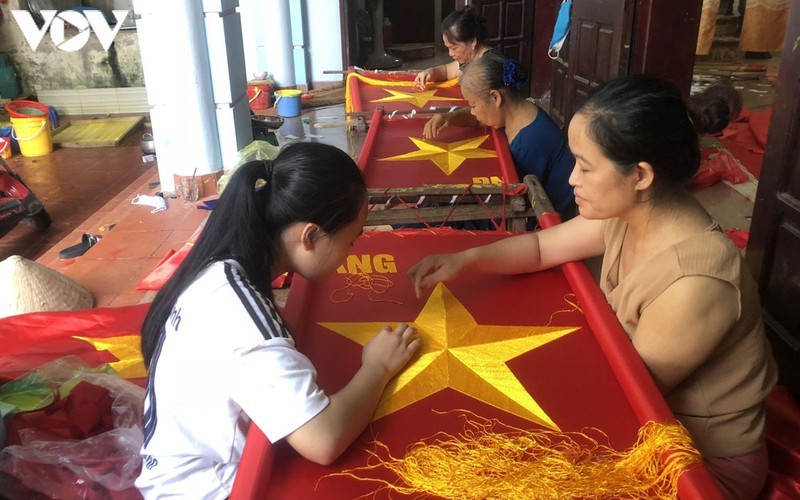 |
||
|
Typically when National Day approaches, local craftspeople will become busier than ever as they work hard to meet orders from across the country. Vuong Thi Nhung’s family is among the largest flag making households in Tu Van village.
|
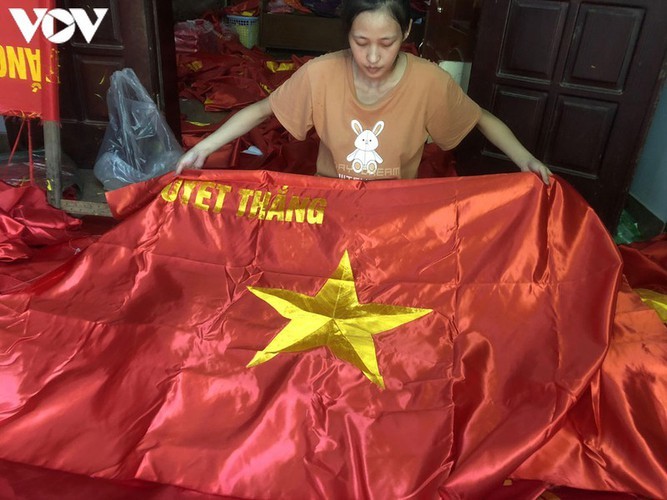 |
||
|
The traditional craft has been passed down through the generations.
|
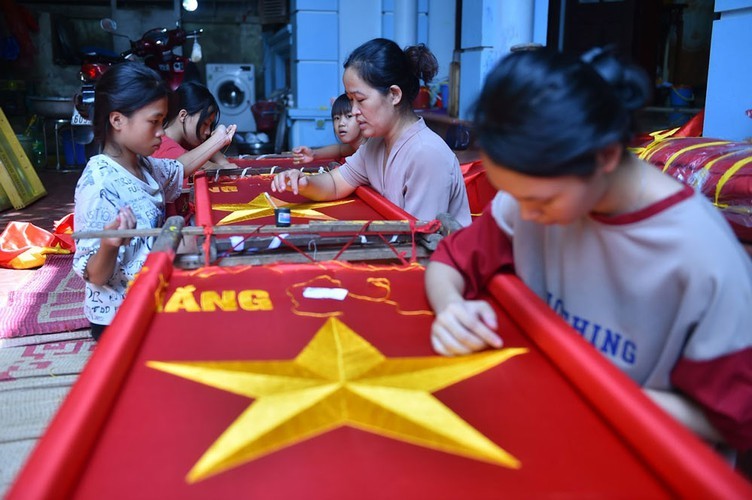 |
||
|
According to the village’s elders, Tu Van has been famous for embroidery and weaving since the 16th century. Indeed, centuries ago many of the villagers opened souvenir shops on Hang Bong and Hang Gai streets in Hanoi in order to sell their products.
|
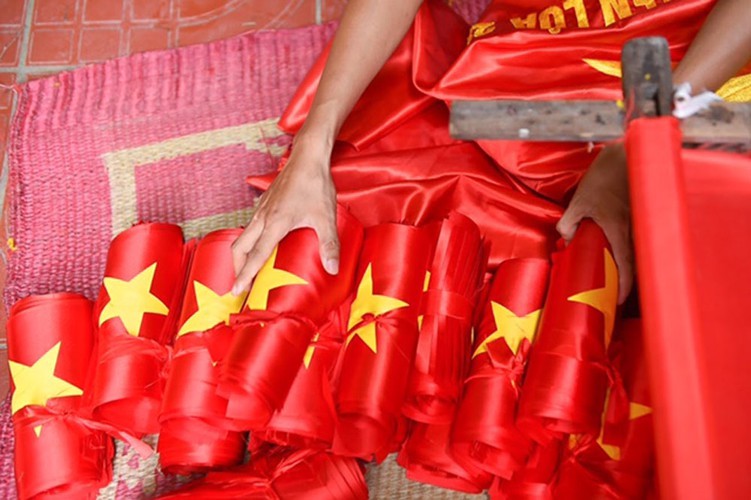 |
||
|
|
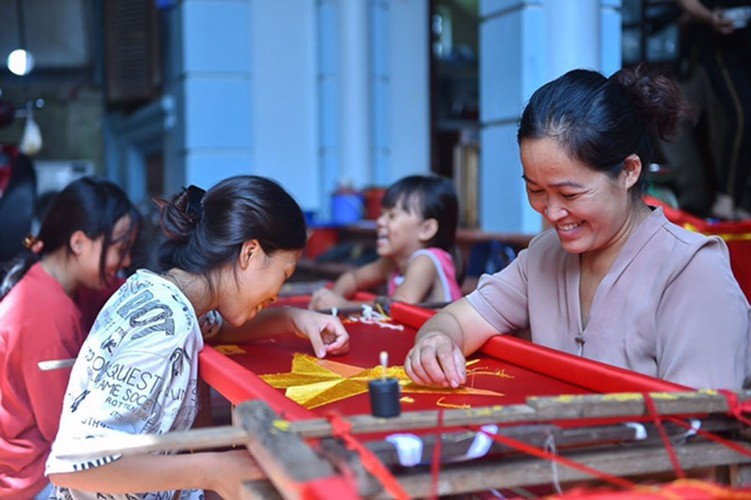 |
||
|
VNA/VOV/Hanoimoi
